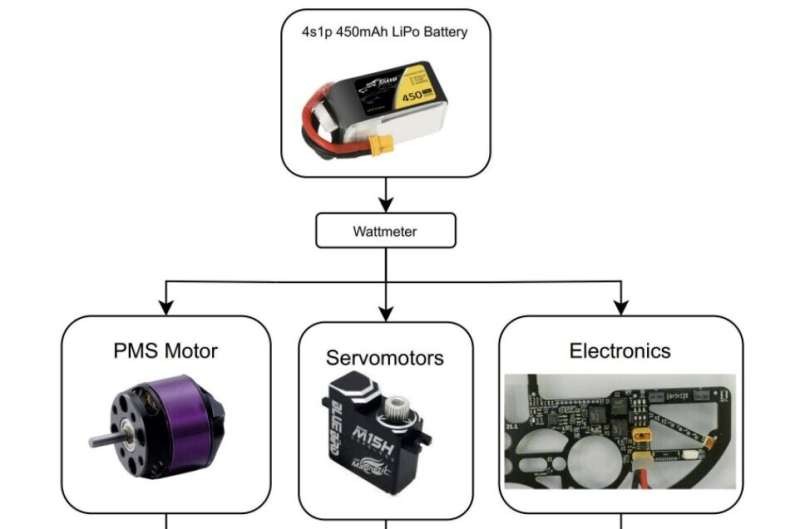
Unmanned aerial vehicles (UAVs), commonly known as drones, have already proved to be highly promising for tackling numerous real-world problems, for instance allowing users to take aerial images, monitor remote or natural environments, deliver parcels, or assisting agents during search and rescue missions and military operations. While these systems are already being used by many companies and individuals worldwide, they can have significant limitations, such as a high-power consumption and limited operation times.
In recent years, roboticists have thus been exploring the potential of alternative flying robot designs, some of which are inspired by birds, bats, insects, or other animals. Some of the most promising among these designs are so-called flapping-wing robots, which reproduce the movements of a bird’s wings to facilitate their flying.
Researchers at University of Seville’s GRVC Robotics Lab recently carried out a study exploring the possible advantages of flapping-wing robots, particularly in terms of their power consumption. Their paper, published on the arXiv pre-print server, examines the potential energy savings associated with flapping-wing robot designs in an experimental setting by assessing the performance of individual components underpinning their functioning.
“One of the motivations for exploring flapping-wing aerial robotic systems is to seek energy reduction, by maintaining maneuverability, compared to conventional unmanned aerial systems,” Raul Tapia, Alvaro Cesar Satue and their colleagues wrote in their paper. “A Flapping Wing Flying Robot (FWFR) can glide in favorable wind conditions, decreasing energy consumption significantly. In this work, two sets of the FWFR components are analyzed in terms of power consumption: a) motor/electronics components and b) a vision system for monitoring the environment during the flight.”
In their experiments, Tapia, Satue and their colleagues specifically evaluated the performance of a flapping-wing robot developed by their lab, called E-flap. This robot, introduced two years ago, weighs approximately 500g and can autonomously fly in both indoor and outdoor spaces while flapping its wings, like a bird.
The researchers conducted a series of tests to assess the power consumption of the individual components used to build the first prototype of the robot, which include a battery, a motor, servomotors, electronics, artificial wings, a tail, and a connectivity system. The energy consumption of these components was evaluated during the three different phases of the robot’s flight—while it was launched, as it ascended and while cruising (i.e., flying at a desired altitude).
They found that while launching and ascending, the robot’s energy consumption was 52.9%, while during cruising it was 47.1%. They also showed that among the different sensors that would allow the robot to sense its surroundings, event cameras were the most energy efficient. The results of this study could guide the future development of flapping-wing robots by highlighting the components that improve their energy efficiency, prolonging their flight time.
“A measurement device is used to record the power utilization of the motors in the launching and ascending phases of the flight and also in cruising flight around the desired height,” Tapia, Satue and their colleagues wrote in their paper. “Additionally, an analysis of event cameras and stereo vision systems in terms of energy consumption has been performed. The results provide a first step towards decreasing battery usage and, consequently, providing additional flight time.”
More information:
Raul Tapia et al, Experimental Energy Consumption Analysis of a Flapping-Wing Robot, arXiv (2023). DOI: 10.48550/arxiv.2306.00848
© 2023 Science X Network
Citation:
Evaluating the energy consumption of flapping-wing flying robots (2023, June 26)
retrieved 26 June 2023
from https://techxplore.com/news/2023-06-energy-consumption-flapping-wing-flying-robots.html
This document is subject to copyright. Apart from any fair dealing for the purpose of private study or research, no
part may be reproduced without the written permission. The content is provided for information purposes only.
For all the latest Technology News Click Here
For the latest news and updates, follow us on Google News.
